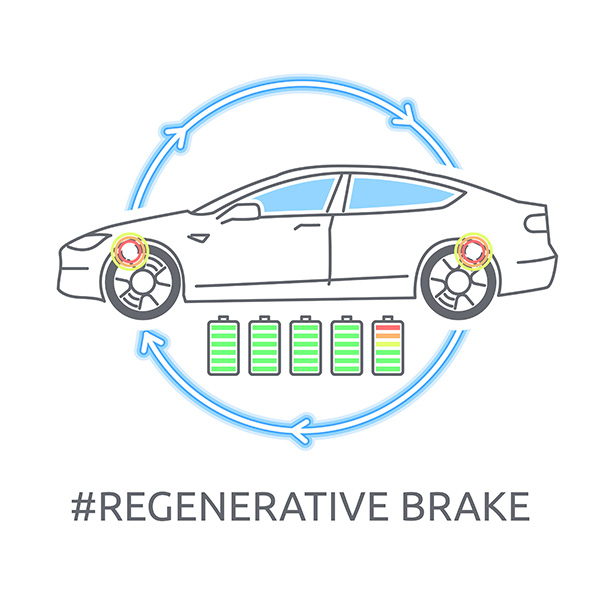
In today's world of automotive innovation, hybrid cars are gaining popularity for their fuel efficiency and eco-friendliness. One of the key features that sets hybrid vehicles apart is regenerative braking. But what exactly is regenerative braking, and how does it work? If you've ever been curious about this technology and its benefits, you're in the right place. We'll explain regenerative braking, exploring its mechanics, advantages, and impact on the driving experience.
An Overview of Regenerative Braking
Regenerative braking is a technology used in hybrid and electric vehicles to capture and store kinetic energy generated during braking. Unlike traditional braking systems, which convert kinetic energy into heat and dissipate it as wasted energy, regenerative braking harnesses it and stores it for later use. This innovative approach improves fuel efficiency and reduces wear and tear on the braking system.
How Does Regenerative Braking Work?
When a hybrid car decelerates or brakes, the electric motor switches into generator mode, converting the moving vehicle's kinetic energy into electrical energy. This electrical energy is then transferred to the battery, where it is stored for future use. By capturing and storing this otherwise wasted energy, regenerative braking allows hybrid cars to extend their range and improve overall efficiency.
Benefits of Regenerative Braking
Regenerative braking offers several advantages over conventional braking systems:
- Improved Fuel Efficiency: Regenerative braking recycles energy that would otherwise be lost as heat, helping reduce fuel consumption and emissions, making hybrid cars more environmentally friendly.
- Extended Range: The energy captured through regenerative braking can be used to power the electric motor, reducing the load on the internal combustion engine and extending the vehicle's range between refueling or recharging.
- Reduced Brake Wear: Since regenerative braking relies less on traditional friction brakes, it reduces the wear and tear on brake pads and rotors, resulting in lower maintenance costs and longer brake life.
- Enhanced Driving Experience: Regenerative braking provides smoother and more responsive braking, enhancing the driving experience and improving overall vehicle dynamics.
Challenges and Limitations
While regenerative braking offers significant benefits, it also comes with its own set of challenges and limitations:
- Limited Effectiveness at Low Speeds: Regenerative braking is most effective at higher speeds, where more kinetic energy can be captured. At low speeds, the braking force required to generate significant energy may be insufficient.
- Battery Efficiency: The efficiency of regenerative braking depends on the battery's state. If the battery is already fully charged, it cannot accept additional energy, limiting its effectiveness.
- Mechanical Complexity: Implementing regenerative braking requires sophisticated control systems and additional components, which increases the vehicle's complexity and cost.
Future Developments and Innovations
As technology advances, researchers and automakers are exploring ways to further enhance the efficiency and effectiveness of regenerative braking. This includes improving battery technology to increase energy storage capacity, optimizing control algorithms to maximize energy capture, and integrating regenerative braking with other advanced driver assistance systems for seamless operation.
Use the full potential of your hybrid car with regenerative braking! Visit Dickerson Automotive for top-notch service and expert advice on maintaining your eco-friendly vehicle. Book your appointment now!